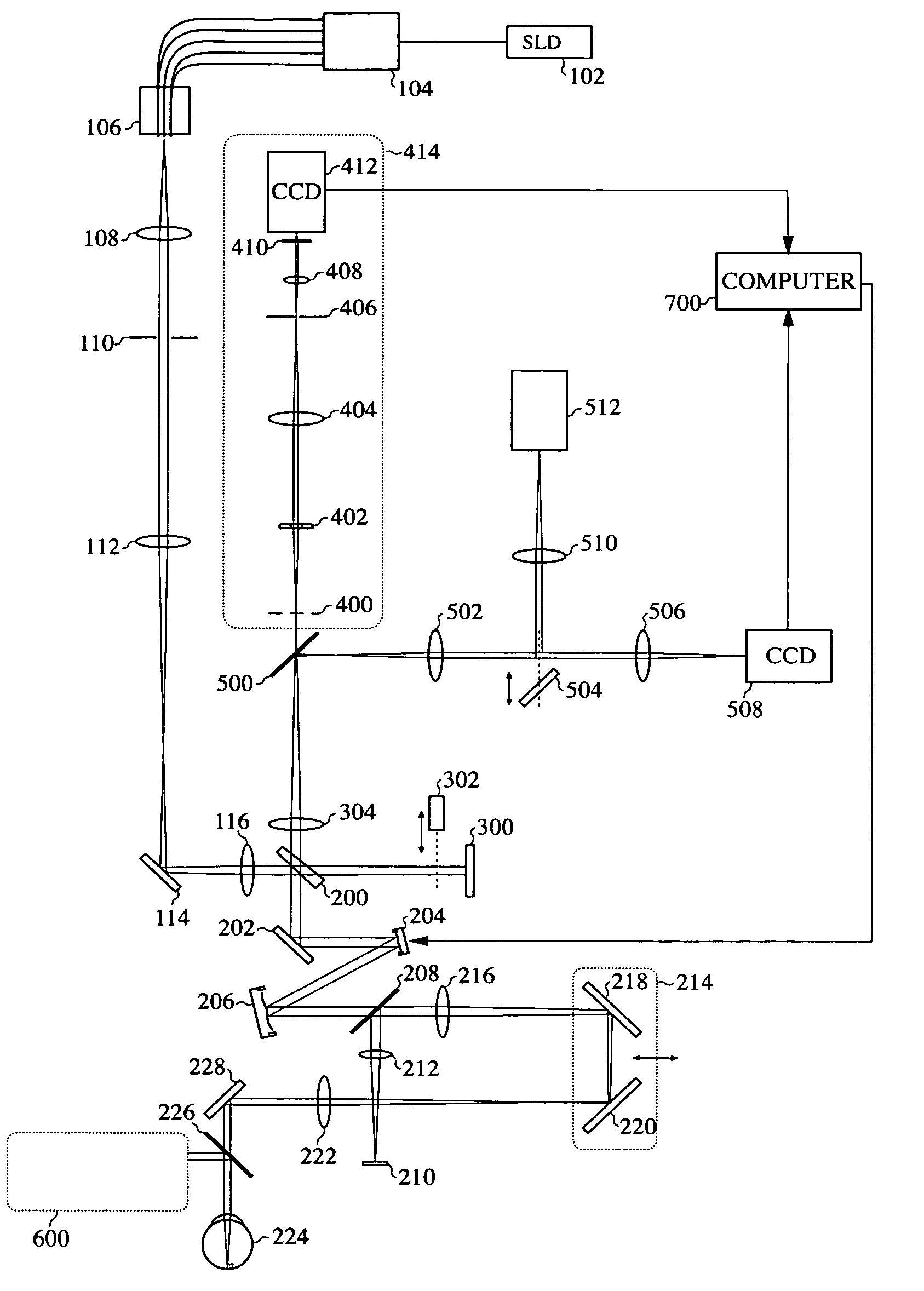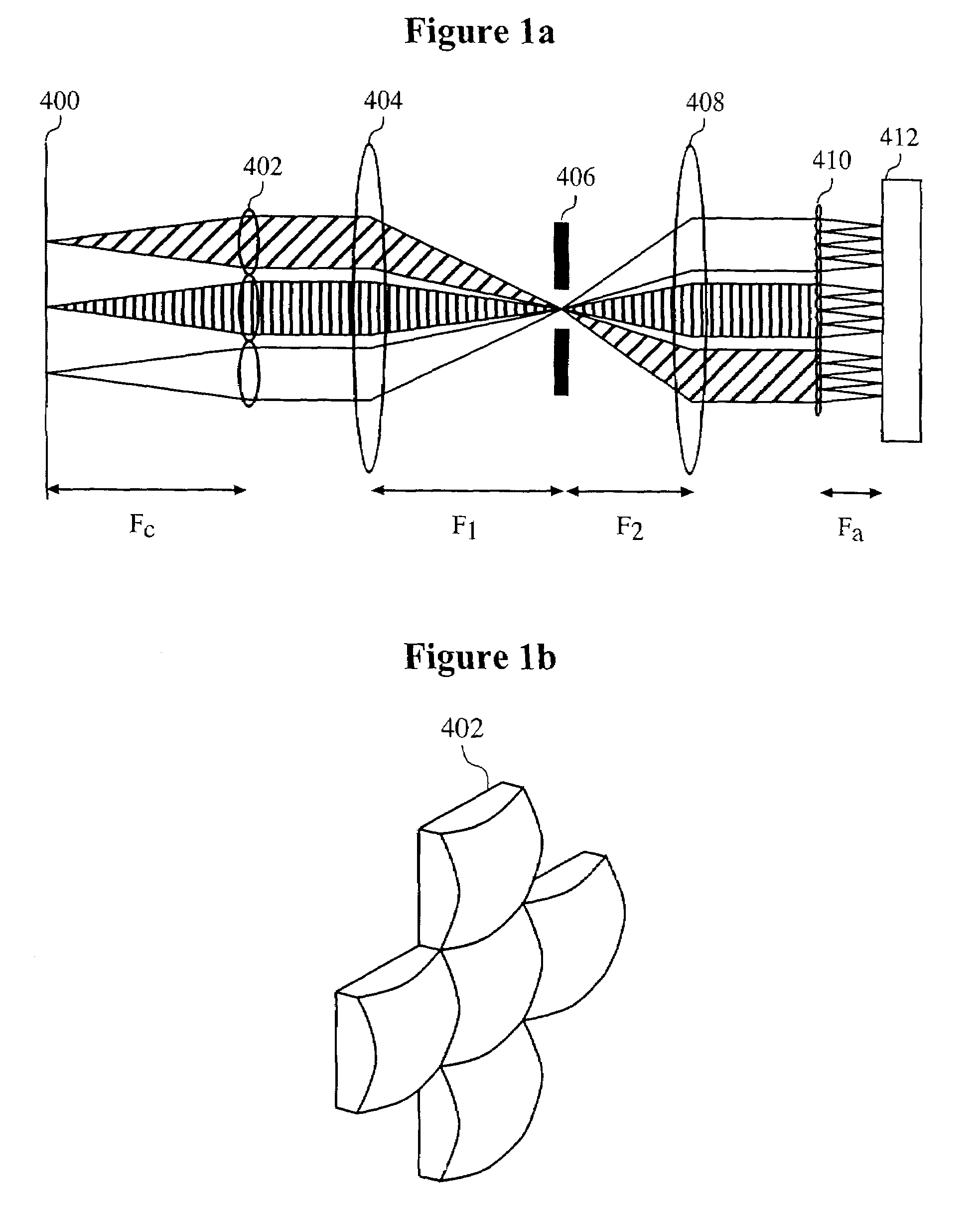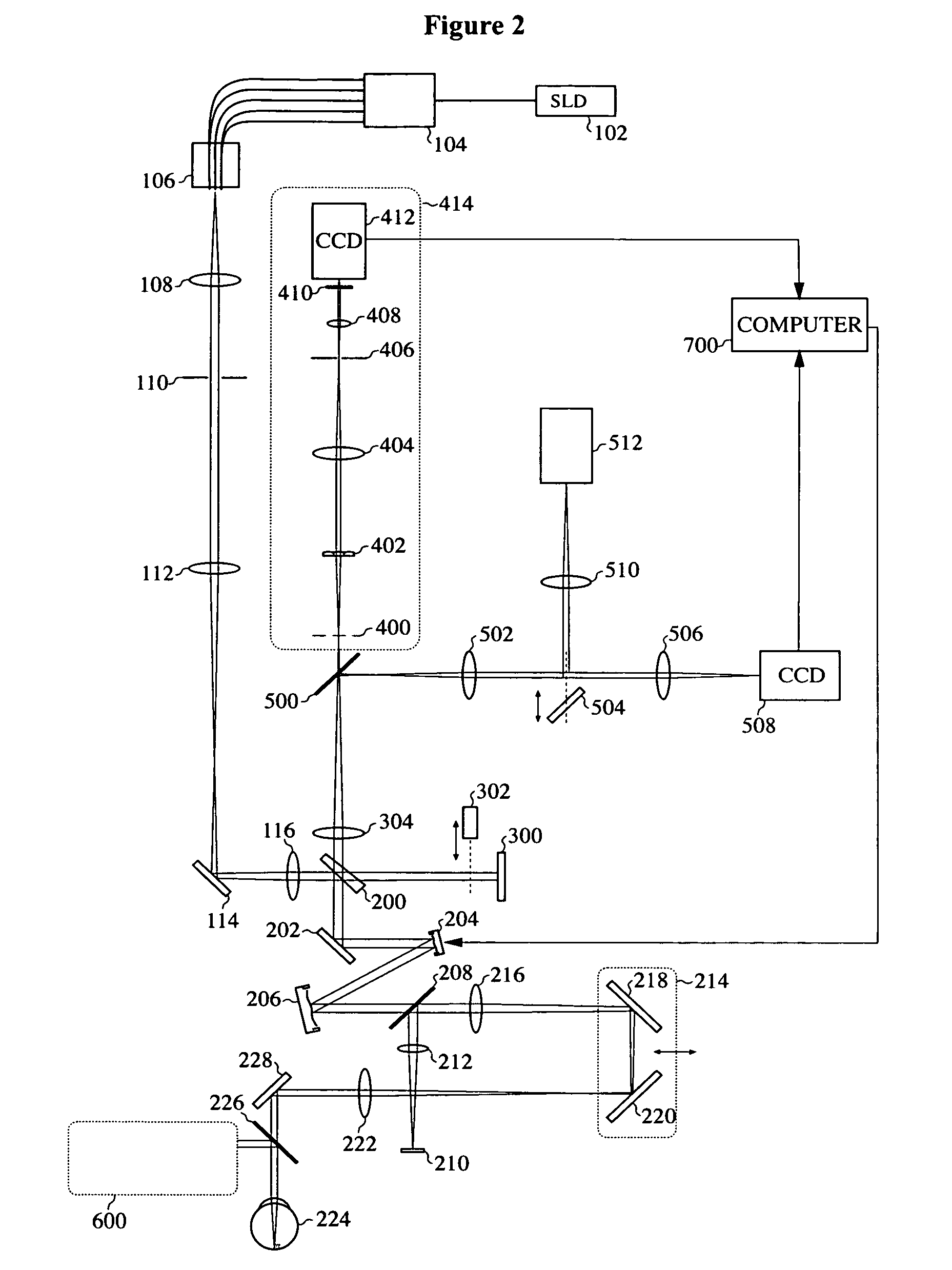Multi-object wavefront sensor with spatial filtering
a multi-object wavefront sensor and spatial filtering technology, applied in the field of high-resolution wide-field adaptive optic imaging system based on compact multi-reference wavefront sensor, can solve the problems of high cost, unwanted light from parasitic source reflection, and high cost, and achieve the effect of high cos
- Summary
- Abstract
- Description
- Claims
- Application Information
AI Technical Summary
Benefits of technology
Problems solved by technology
Method used
Image
Examples
example 1
[0043]In the following we describe, the use of the sensor in connection with retinal imaging (overview in FIG. 2).
[0044]As shown in FIG. 2, continuous relatively broadband near-infrared light from a super-luminescent diode (SLD) 102 is fed through a pigtailed single mode fiber to a 1-to-5 single mode fiber splitter 104. The five single mode fibers are connected to an adjustable fiber holder 106 that feeds the light through five single mode fibers. The fiber ends, arranged in a cross with a center-to-center displacement of 3.5 mm, are positioned at the focal plane of a collimating lens 108, and light fed through the fiber ends forms five separate collimated ray-bundles after the collimating lens 108. The bundles pass a pupil 110 and are coupled into the main light path via lens 112, a mirror 114, and a lens 116.
[0045]Part of the light is diverted by a wedge beam splitter (WBS) 200 and a mirror 202 towards two deformable mirrors (DM) 204 and 206 (OKO Technologies, Delft,...
example 2
[0049]A simulation was made (see FIG. 3a) using the optical software package ZEMAX (ZEMAX Development Corporation, Bellevue Wash., USA) of the layout of the multiple focused source images in the plane of the WFS pinhole 406. The scale bar is 250 microns.
[0050]FIG. 3b shows actual images of the multiple focused source images, the two leftmost images just in front of the plane of the WFS pinhole 406, the middle image in the plane of the WFS pinhole 406, and the two rightmost images just after the plane of the WFS pinhole 406. FIG. 4a shows a ZEMAX simulation of the layout of the multiple Hartmann images on the WFS camera 412. Scale bar is 6900 microns. FIG. 4b shows the real multiple reference Hartmann images on the WFS camera 412 and FIG. 4c shows the real multiple measurement Hartmann images on the WFS camera 412.
PUM
 Login to View More
Login to View More Abstract
Description
Claims
Application Information
 Login to View More
Login to View More - R&D
- Intellectual Property
- Life Sciences
- Materials
- Tech Scout
- Unparalleled Data Quality
- Higher Quality Content
- 60% Fewer Hallucinations
Browse by: Latest US Patents, China's latest patents, Technical Efficacy Thesaurus, Application Domain, Technology Topic, Popular Technical Reports.
© 2025 PatSnap. All rights reserved.Legal|Privacy policy|Modern Slavery Act Transparency Statement|Sitemap|About US| Contact US: help@patsnap.com



